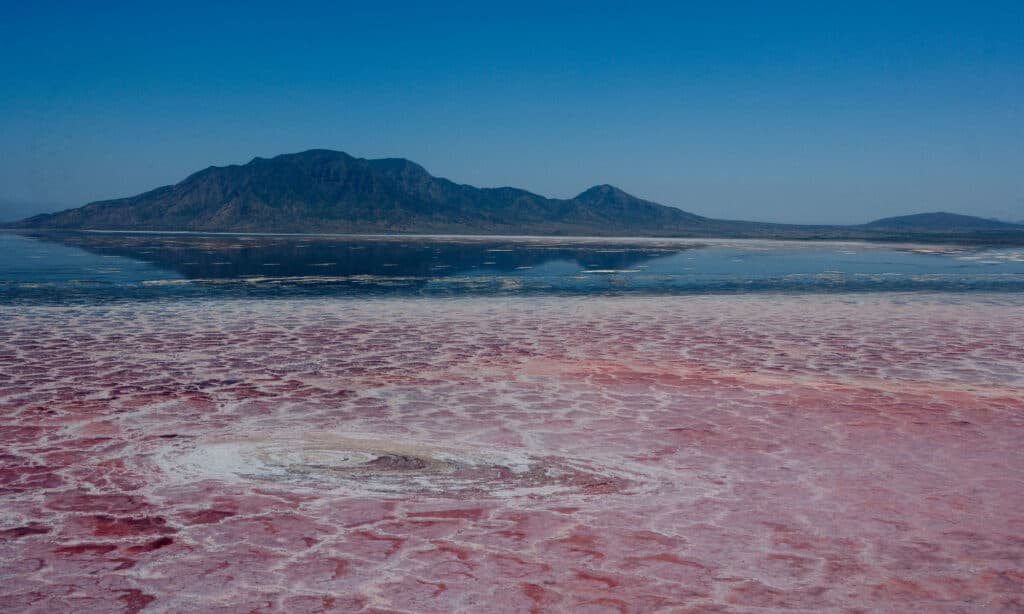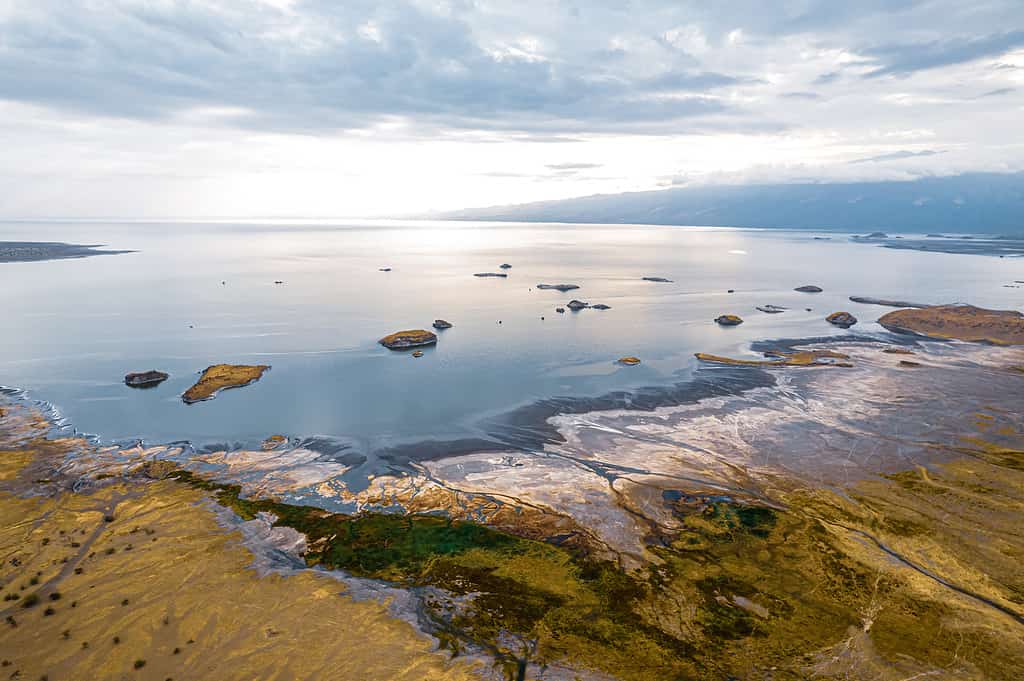There are many unique lakes out there but there are none more interesting than the lake that mummifies anything that falls in. You may already know a little about this lake, thanks to the pictures taken by a famous artist and their picture of mummified birds found on and in the lake. However, you likely don’t know everything about this body of water.
To learn more about this unique lake, including where it is and what makes it so toxic, continue reading below.
What Is the Lake That Mummifies Anything?

You might think the unique color of the water is all that’s unusual about this lake but there’s a lot more to it than what you can see.
©iStock.com/Mario Faubert
The lake known for mummifying anything that lands in the water is Lake Natron. There are a few things strange about Lake Natron. The first is that it sometimes turns red.
The more unusual aspect, though, is the fact that it’s caustic. Caustic lakes are also known as salt or alkaline lakes. This highly alkaline water is toxic to most animals.
It’s common to see corpses of birds and other animals in the lake. In fact, the lake is a popular tourist destination for that very reason. Many people have tried to take pictures of the lake, but one artist in particular is to thank for the growing knowledge and popularity of Lake Natron.
Nick Brandt is that photographer. He takes photos exclusively in Africa, focusing on the natural world and how it’s disappearing. In one of his collections, Across the Ravaged Lands, he includes photos of birds and other animals after they’ve been calcified by the lake.
Brandt didn’t go into the water to get these animals. Because of the temperatures surrounding the lake, the water levels fluctuate. When it pulls back, mummified animals are left behind. These are the ones that Brandt used to create his photos.
Where Is the Lake That Mummifies Anything?
Lake Natron is found in Tanzania. It’s about 62 miles (100 km) northwest of Arusha. Though most of the lake is in Tanzania, a small portion of the lake does stretch over into Kenya.
The lake measures just under 35 miles (56 km) long and about 15 miles (24 km) wide.
Why Does Lake Natron Mummify Anything That Falls In?
The lake’s water is heavily alkaline. It has high levels of minerals such as salt and magnesite that make it harmful to most organisms. At times, the pH reaches above 12.
This alkalinity is the result of the water coming directly from a volcano, Ol Doinyo Lengai. There are no streams or springs that are nearby to help dilute the water. Ol Doinyo Lengai is a unique volcano. While most volcanoes release silicates, this volcano releases natrocarbonatites.
When animals fall in, they suffer an agonizing death before their bodies calcify. This is what gives them a mummy-like appearance. As soon as an animal comes into contact with Lake Natron, calcium salts start to build up on its body. This causes calcification.
Most animals that fall into the center of the lake decompose. However, on the edge of the lake, animals are more likely to simply calcify. Unless something destroys them, they’ll stay that way for a long time, if not forever.
Thankfully, there’s also no outlet. The water is contained in the lake, with no worry that it will enter a river or stream that people rely on. However, the lack of an outlet means that the only way water can leave the lake is via evaporation. This leaves behind the salts and minerals and increases the concentration of both in the water. Over time, the lake grows more and more toxic.
That’s not the only issue with the lake. It gets pretty hot. In the summer, the temperature reaches up to 140 degrees Fahrenheit.
What Animals Can Survive in Lake Natron?

Lake Natron is among the habitats hosting the highest number of flamingos worldwide.
©Rahim Mngwaya/iStock via Getty Images
Life thrives even in the most toxic of environments. As you might expect, there are some bacteria in the lake. However, some animals make the lake their home as well.
However, while the bacteria are impressive, it’s flamingos that can best handle the lake. Not only can these durable birds handle the water, alkalinity, and bacteria in the lake, but it’s one of the largest breeding grounds for the lesser flamingo (Phoeniconaias minor).
The reason this is such an important breeding ground for flamingos is because it’s a safe space. The water, though it does fluctuate, doesn’t do so greatly. Flamingos make nests on little islands in the water. The water protects their eggs from predators and stays low enough to not cause injury to the birds or their offspring.
There’s also plenty of food for the flamingos to eat. This is because, though flamingos are the most well-known animals to live in the area, they aren’t the only ones. There is a species of tilapia, Alcolapia latilabris, that has made a home on the lake.
There are also algae. This algae is responsible for making the water red. It’s also what the flamingos and fish feed on.
The photo featured at the top of this post is © derejeb/iStock via Getty Images
Thank you for reading! Have some feedback for us? Contact the AZ Animals editorial team.






